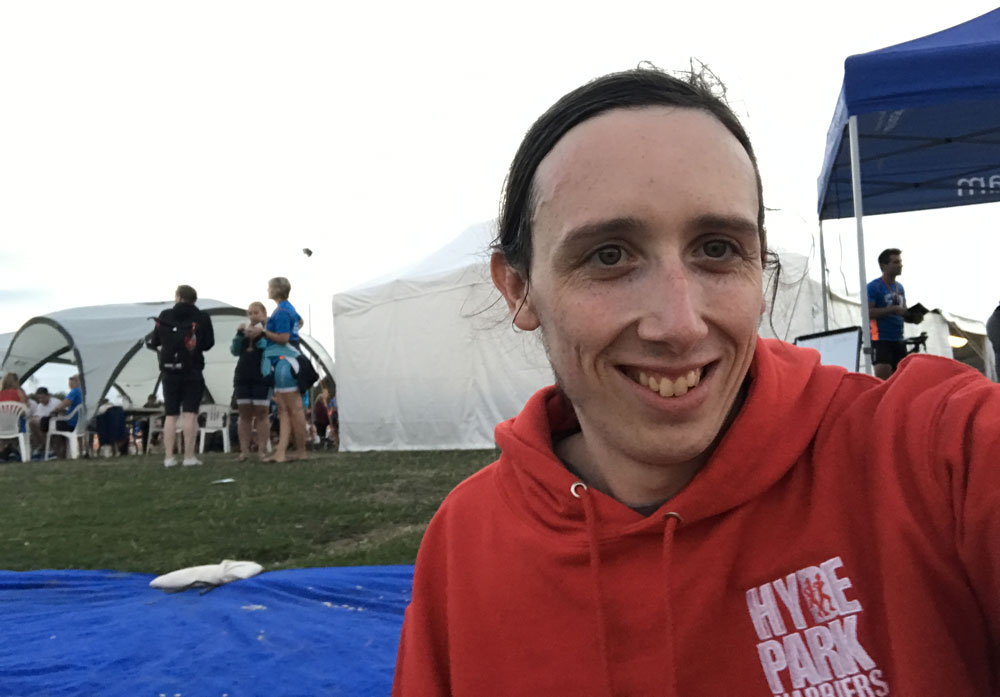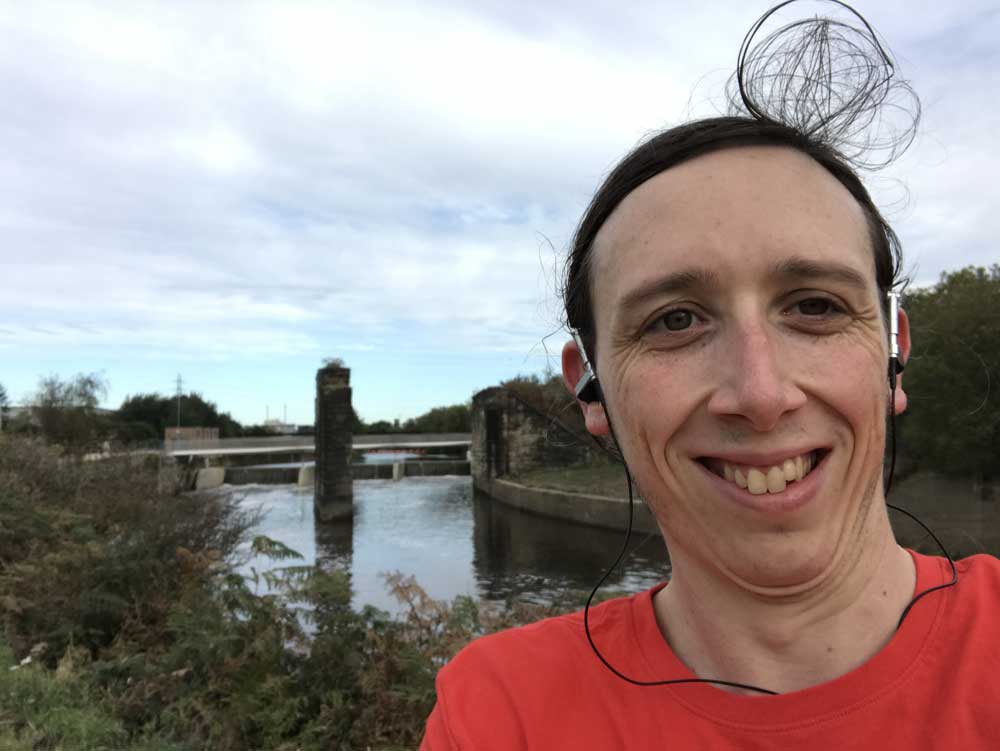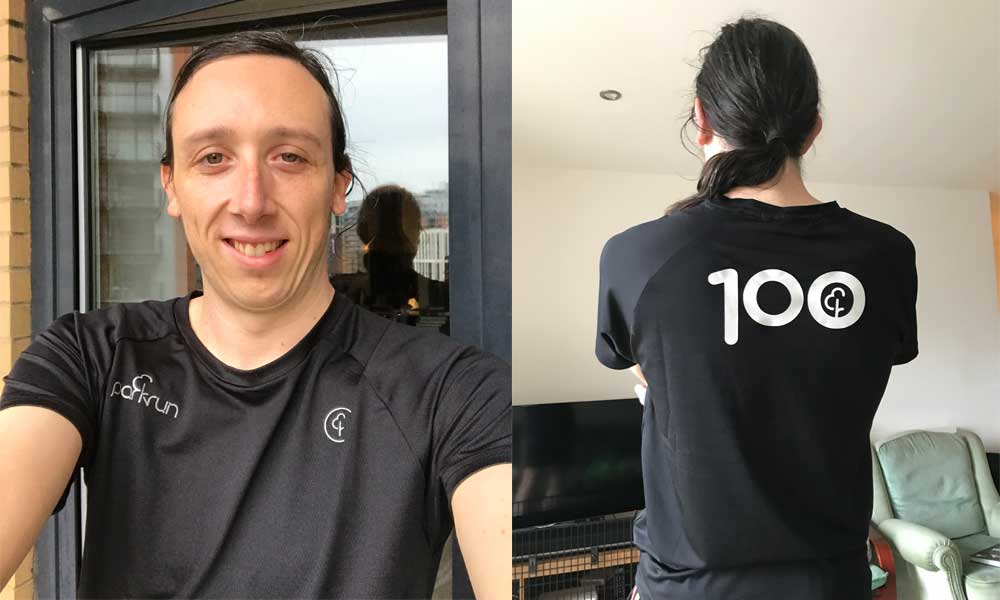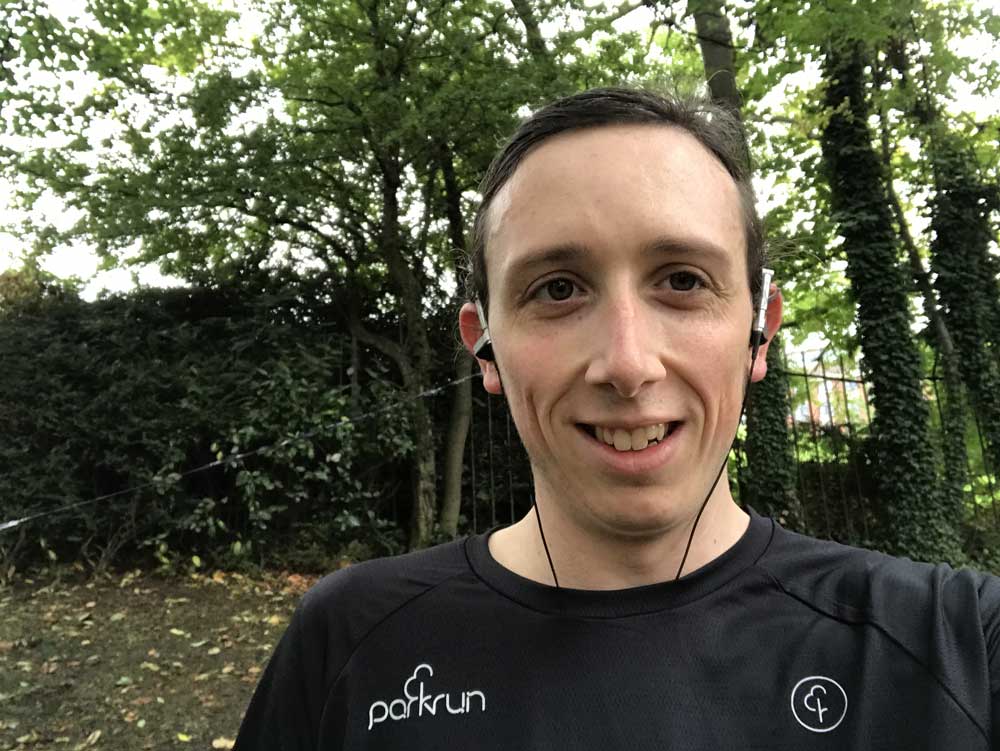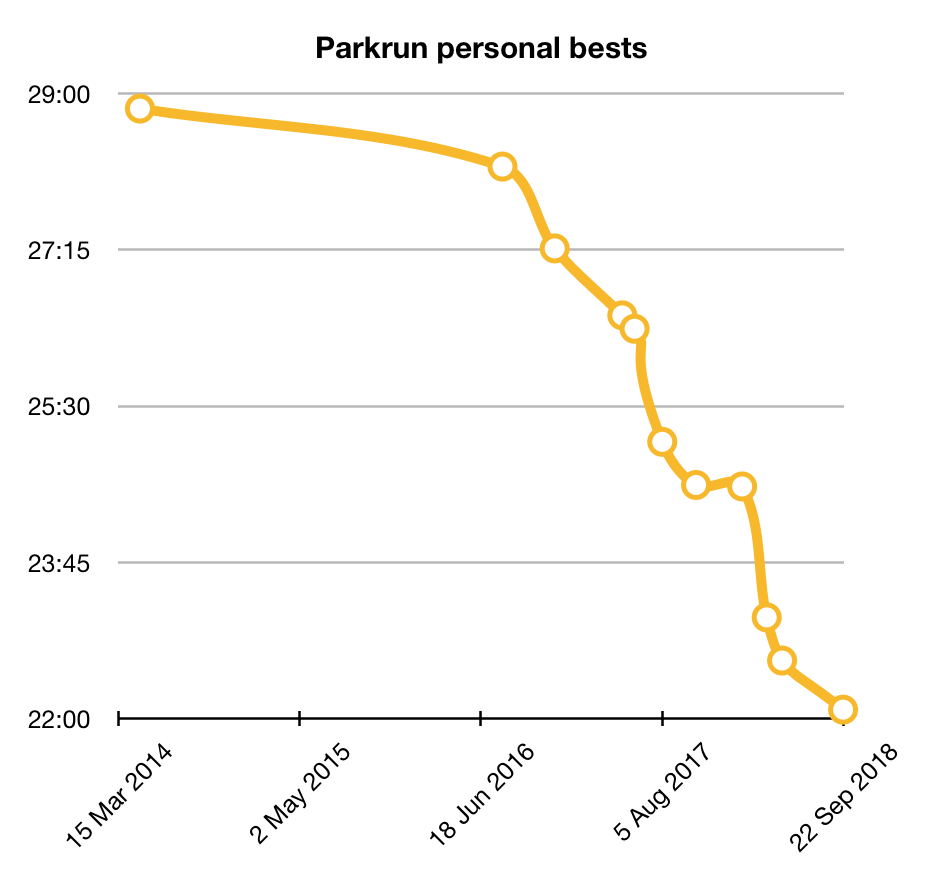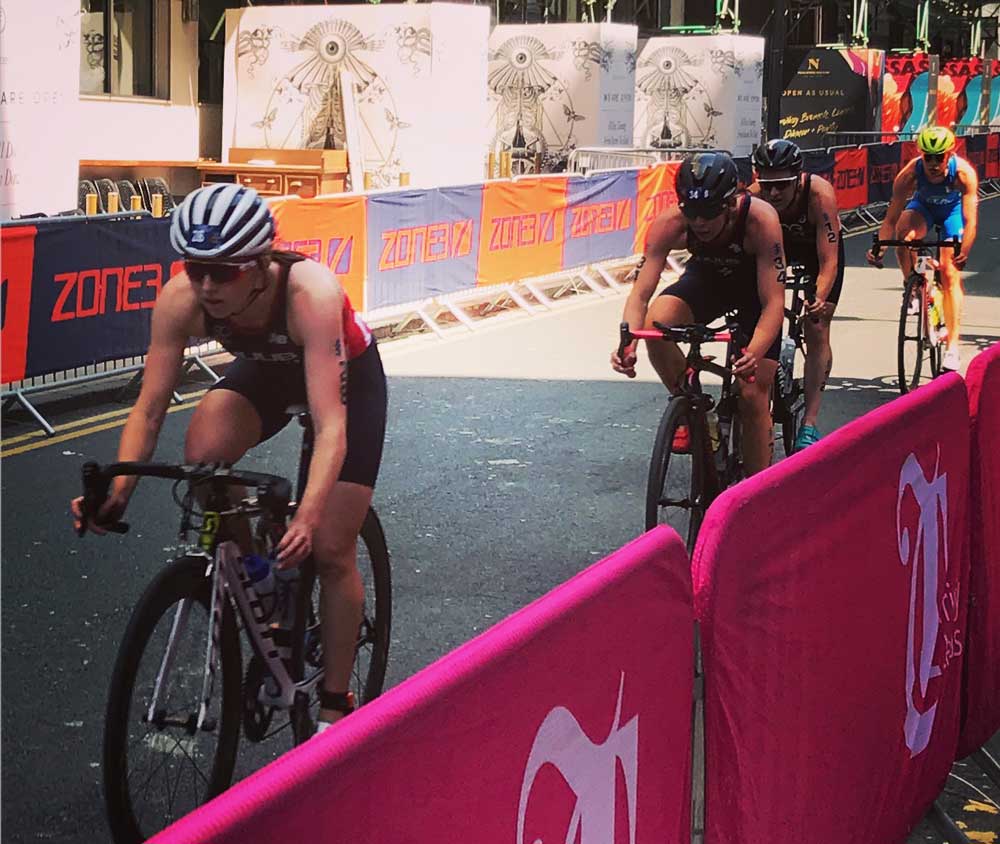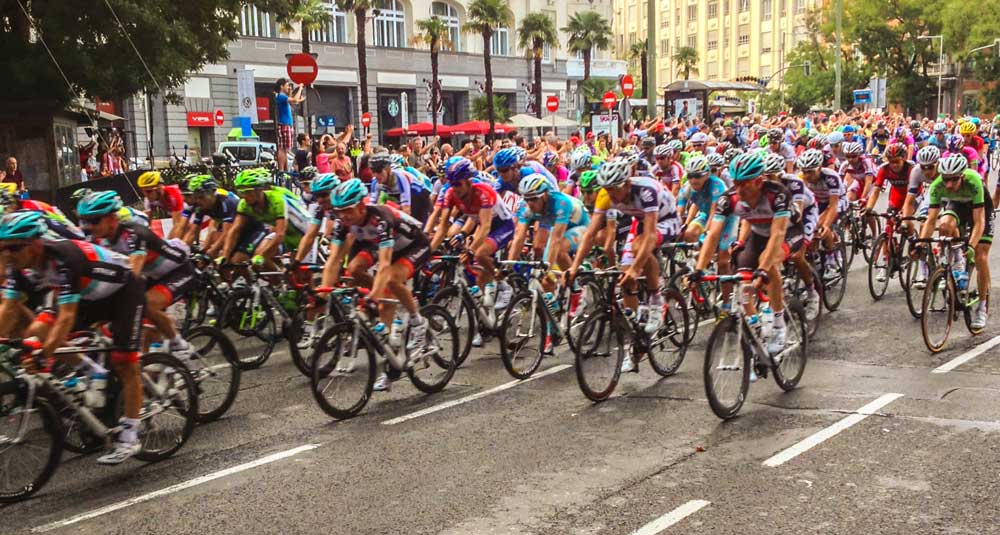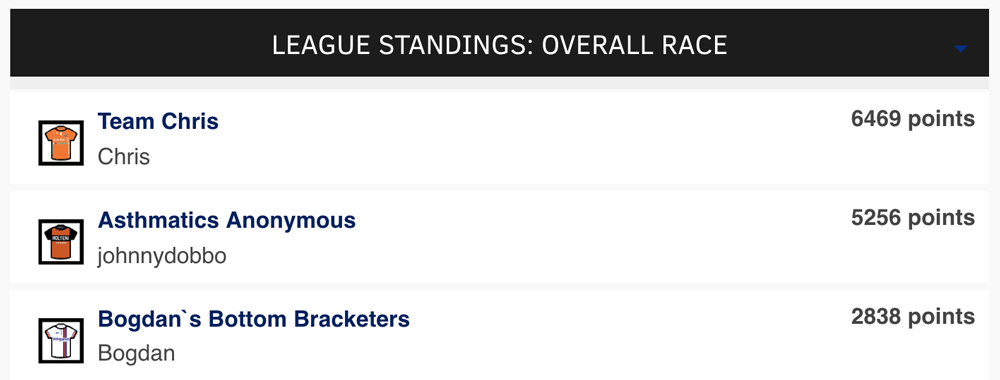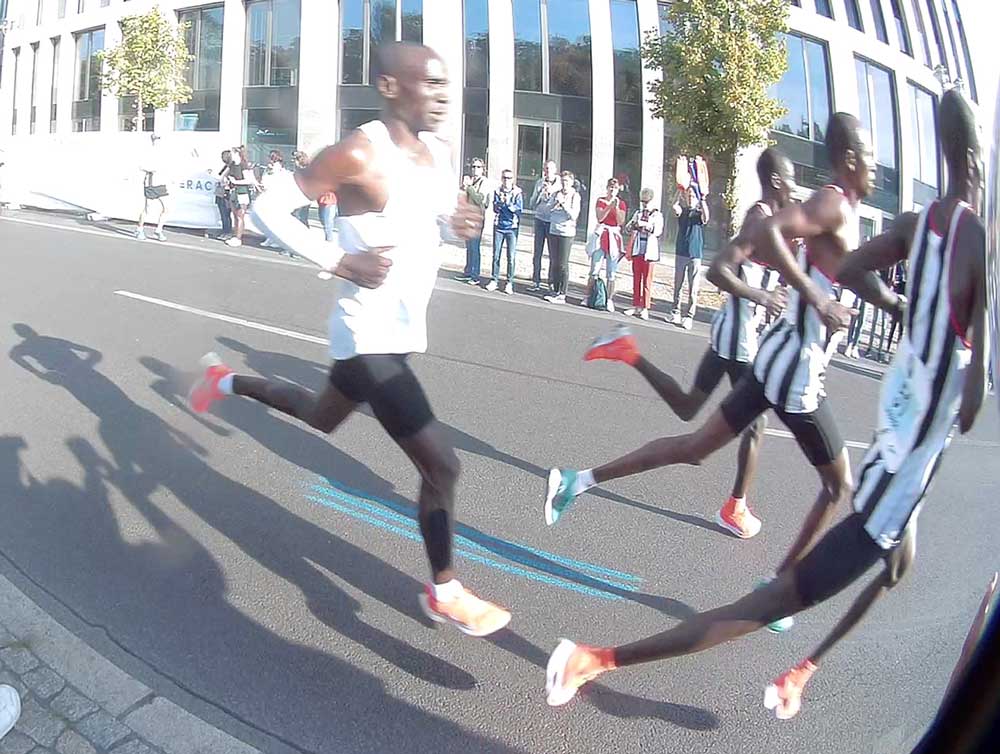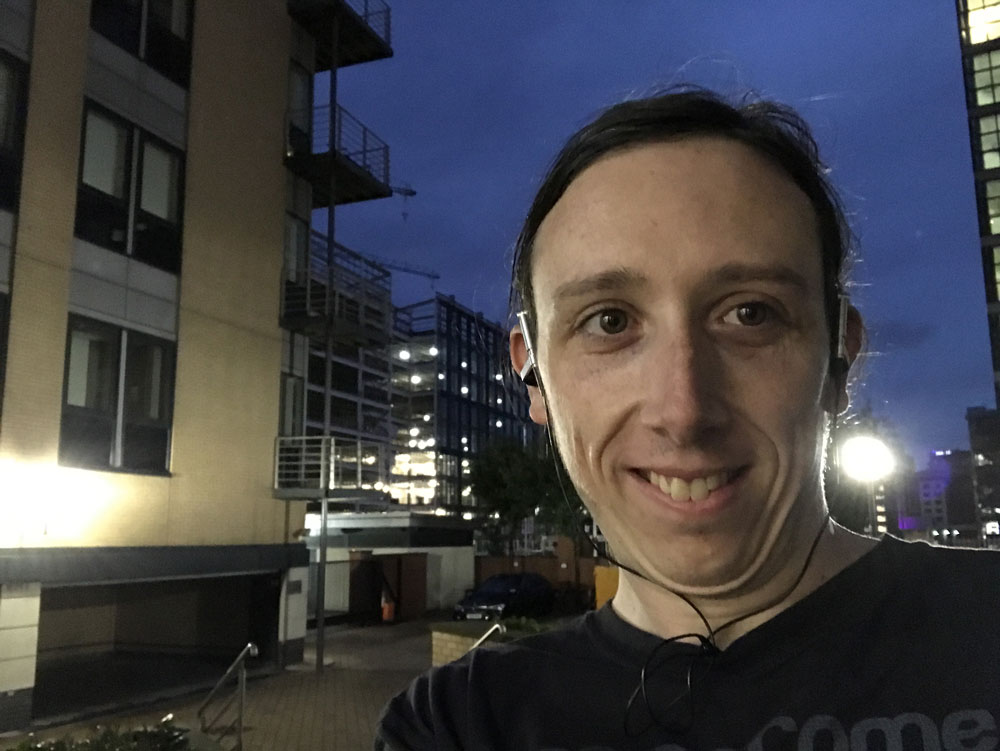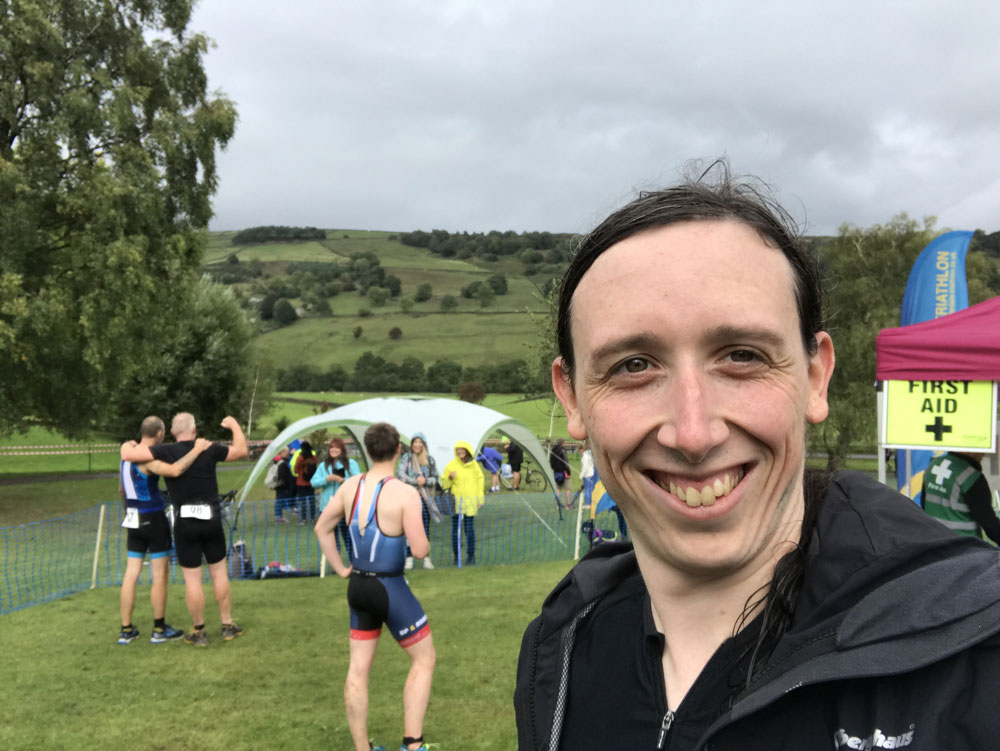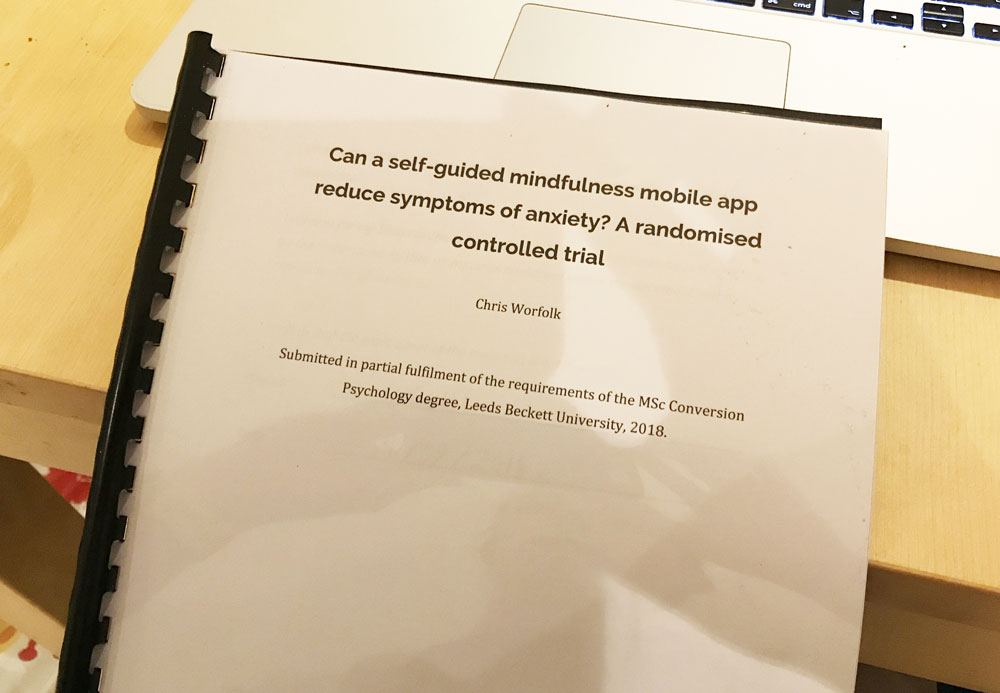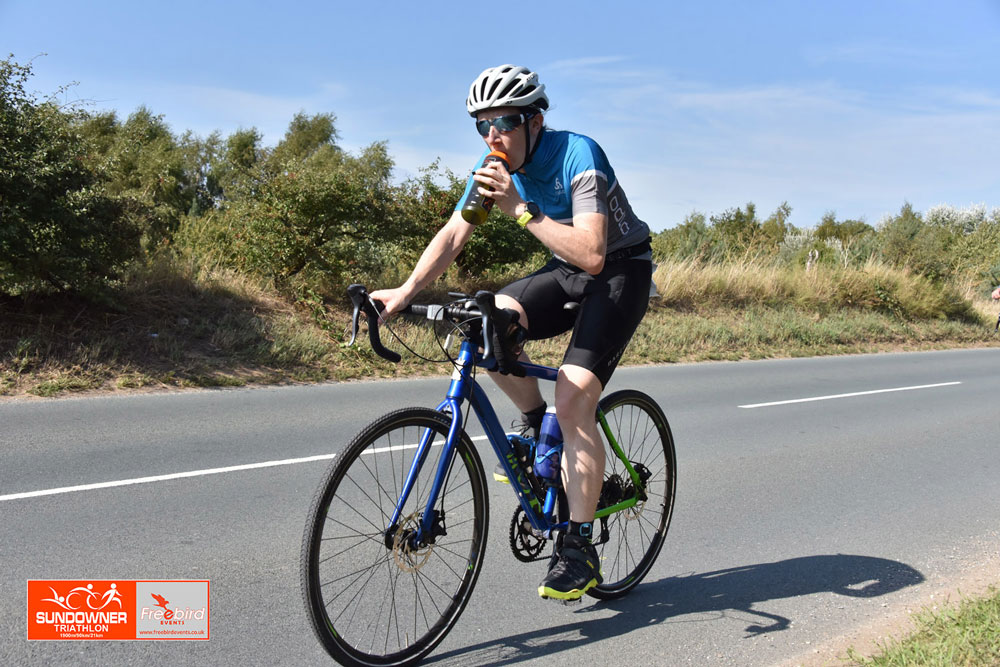
A middle distance triathlon is a 1,900 metre swim, 90 km bike and 21 km run (half marathon). In old money, that’s 1.2 miles in the water, 56 miles on the bike and a 13-mile jog. It’s the thing that Alister Brownlee is moving up to. And, in a moment of madness over the summer, what I signed up to, too.
Preparation
Even though it is my first year doing triathlon, I feel pretty well versed. I had already done three sprint distance and four standard distance races, so I knew what to expect. My August was full of big sessions: 100 km bike rides, 30 km runs and one never-ending day when I cycled to Bolton Abbey and back before doing a 10 km run.
The preparation was more than just physical training. I upgraded my bike to clipless pedals, something which I had been meaning to do anything but this gave me the push. Wiggle delivered palettes of nutrition to my house so that I had enough gels to get me through the training sessions and the race itself. I revised my own sport psychology course.
A week before the race, it looked like disaster had struck. In my final training run, a 36 km slog, my calf muscle began playing up and eventually left me limping. I should have stopped, but I didn’t because it had gradually come on. If something goes pop, you know you’ve done real damage. But if something just hurts more and more, it’s often fine. As it happens, it wasn’t fine and kept hurting all weekend.
So, I had a decision to make. Did I try to race on it or not? If it had been the start of the season, then probably not. But, as it was the end, I decided I would try and get back to training and see how it felt. I got back in the pool on Tuesday, back on the bike on Wednesday and went for a short run on Thursday. It held up fine. Between rest, strength exercises and a physio session, I had got lucky. The big day arrived…
The day itself
Sundowner starts at noon. You have eight hours to beat the cut-off time, so it’s designed to coincide with the sun going down, hence the name. This is a much more civilized time to start a triathlon. Not only did it mean I could get up at 7am, rather than 5am, but it also meant that instead of starting the run in the noonday sun, we started it at 4-5pm when the heat of the day was starting to pass.
I arrived in Allerthorpe just after 10am, where I met up with the Hyde Park Harriers who had just completed the Sundowner Sprint Triathlon. Registration and racking my bike were uneventful.
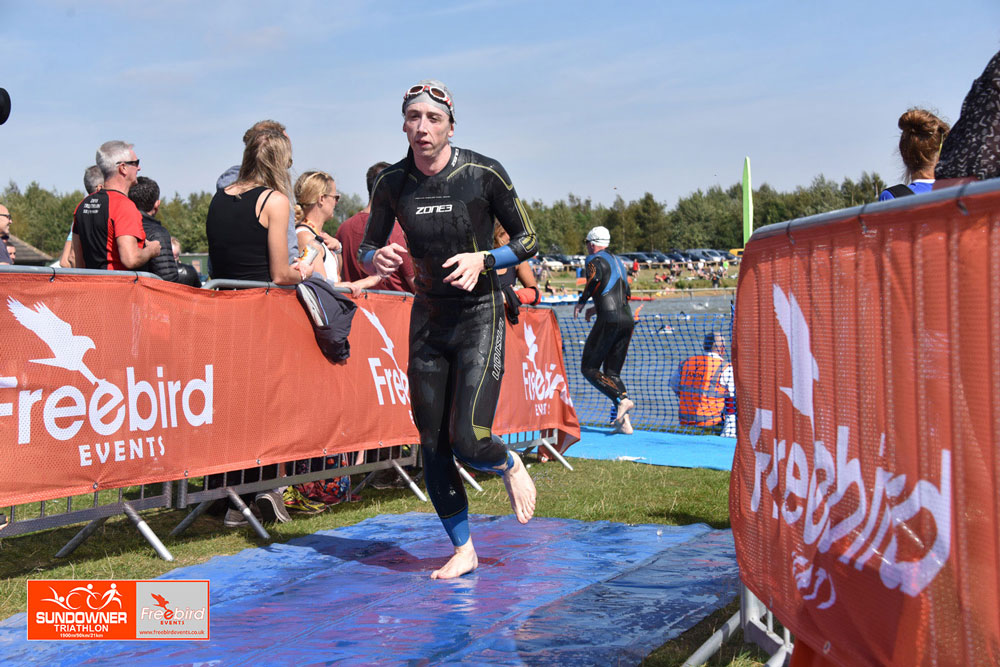
The swim
Things were eventful from the start. About 100 metres into the swim one of my fellow competitors had a panic attack, so I had to stop and summon help for him. This meant I had lost of the feet of the large swim in front of me and it was a hard chase to get back on.
Things were quiet after that until the last few hundred metres of the swim when the pack of faster swimmers from the wave behind me caught up. There was nowhere to hide: there were dozens and dozens of them everywhere you swam. You couldn’t help but accidentally kick people as they groped me from behind.
Despite stopping at the start, I clocked in at 50:20, which was right on target.
The bike
90 km is a long way to cycle. The nice thing about York is that it is pan flat. Even compared to the Flat n Fast 100 it is super-flat. No wonder the entire place floods.
The downside is that there are no hills to break up the wind. So, while it was an easier bike than the Tour de Yorkshire, there were some tough stretches when you were battling a headwind and the tailwind that I assume we got at some point did not compensate.
Most of all, though, it was the sheer length of the bike that made it hard. I counted down in 10 km increments, which is when I took my feeds. But, to reduce the monotony, I also counted down in 10%s (81 km, 72 km, 63 km, etc) as well as quarters, thirds and halves. That way, I was never more than 9 km away from my next milestone and usually a lot less.
By the end of the bike, I was uncomfortable. My back was aching, my bottom was sore and I was fed up with being on a bike. Unfortunately, I had budgeted for a bike fit, but only at the end of the year, so my position is not yet ideal.
I finished the bike in 3:34:01. Not a great time but safely within the cut-off.
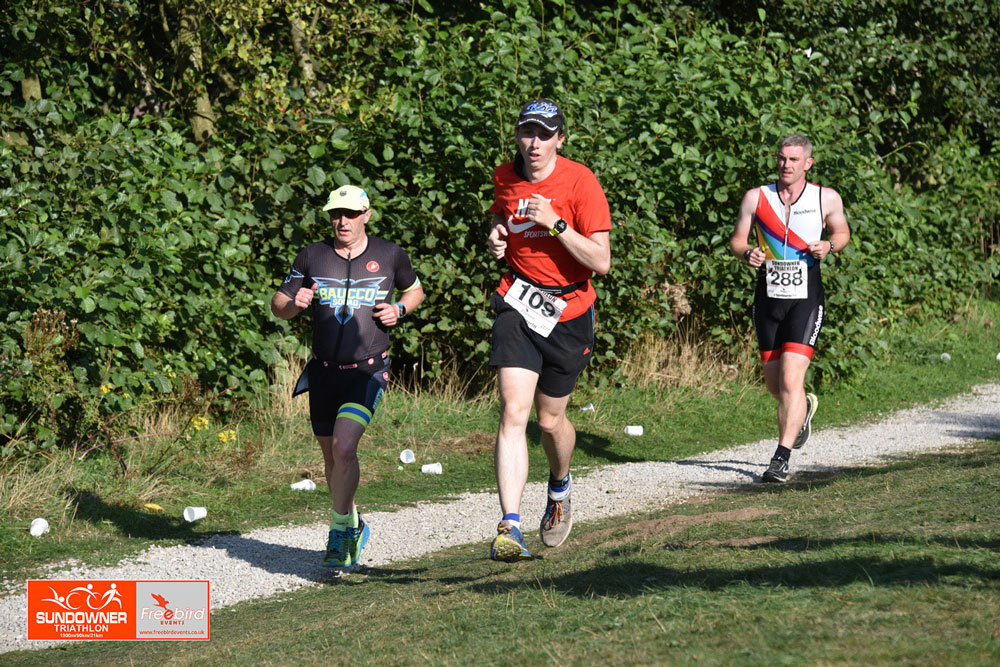
I’m not sure why I look like a giant in this photograph.
The run
Finally came the half marathon to finish things off. This is what I was most nervous about because I thought if my leg was going to give up anywhere, it would probably be the run. And that would have been a lot of suffering for nothing.
I was pretty tired by this point, so I decided that I would walk past the aid stations as I took on food and drink, and then run all of the rest. This tactic worked well although the definition of where an aid station started and finished gradually got longer as the race went on.
I wasn’t sure whether I should keep running or not. Part of me wanted to be able to say I had run the whole thing. But another part of me wanted to say that I had been strong enough to recognise when there is a time for compassion and allow myself to walk.
In the end, my pace calculations settled the debate. As each kilometre ticked by, I worked out how fast I had to run to be within my target time of below seven hours. By 19.5 kilometres I had still had over 20 minutes to do the last mile. So, I allowed myself to walk the next 500 metres before running the final kilometre.
I finished the run in 2:08:54, which felt good given my half marathon PB is 1:52:24.
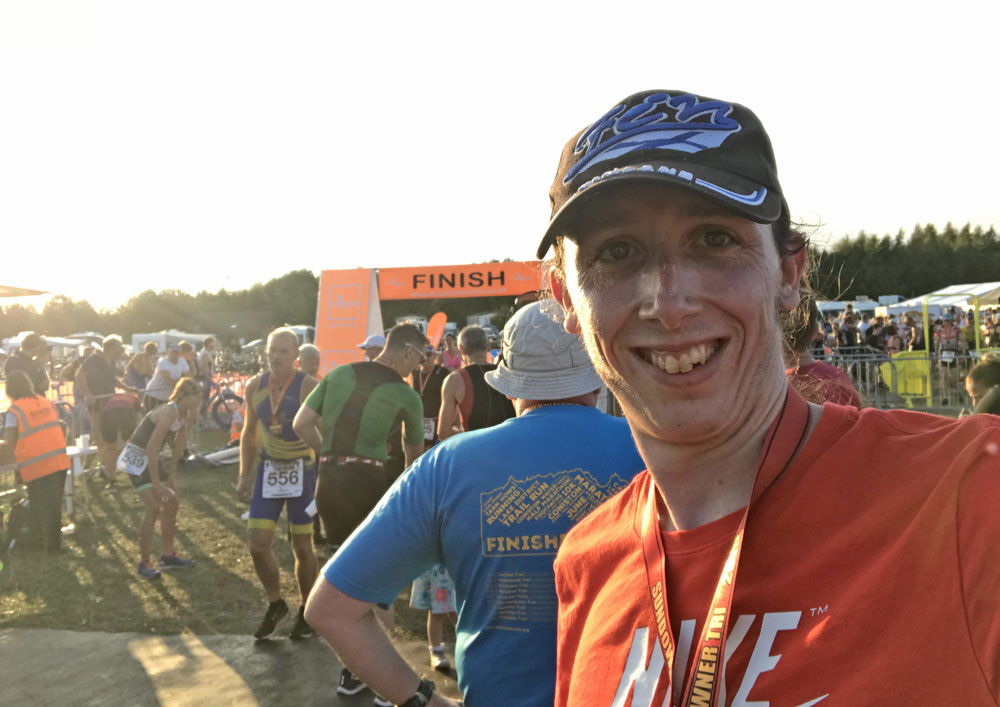
The finish
Official time:
6:48:13
I want to tell you that the finish was amazing and worth the endless hours of training and seven hours of hell that I had put myself through. And, for a split second, it did feel amazing.
But the truth is that triathlons, like marathons, don’t feel amazing at the end. Parkruns feel amazing. You’ve been working your cardio system hard for half an hour, and then you stop and the pain instantly goes away. Endurance events aren’t like that. Your muscles don’t stop aching when you stop moving. That’s not to say it isn’t worth doing. But the real reward comes when you wake up the next day, and every day, and get to think “wow, I actually did that.”
What I mostly felt after the race was thirsty. Within the first hour, I had downed four drinks: two J2Os, a can of Red Bull and a Lucozade Energy. A did a 500ml bottle of Coke on the drive back and two litre-sizes bottles of juice when I got home.
Not much else was going on. As a competitor, I got a hog roast sandwich and a dessert as part of my registration fee, at the afterparty. I made it halfway through the sandwich before I had to give up. It was heartbreaking to see good pork to go to waste but what else could I do?
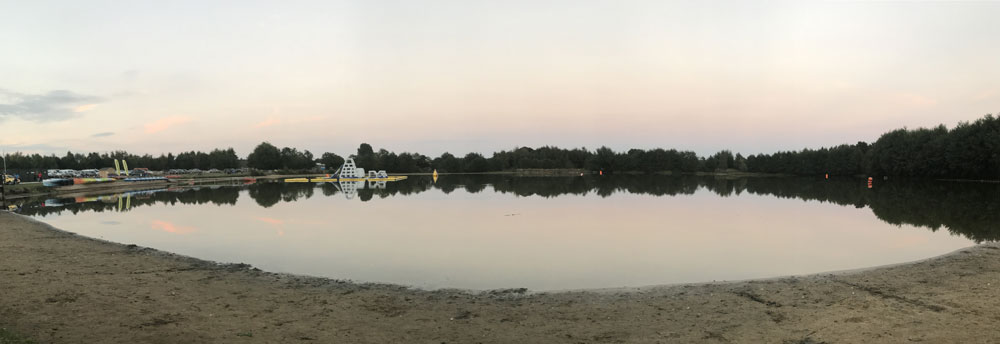
My splits were 50:20 (swim), 7:35 (T1), 3:34:01 (bike), 7:12 (T2) and 2:09:05 (approx run).
The future
So, what’s next? I genuinely have no idea.
A full distance Ironman? Not yet. I am sick of training, sick of being on a bike, and sick of triathlon. I mean, not sick enough to not race Nidderdale next week. But sick enough to be glad that the season is coming to an end. And while I might be willing to do it all again next year, doing a full distance race would have to involve me doubling my training load. Middle distance is easy: I swim 2,000 metres in the pool, I might bike 100 km at a sportive and I like the half marathon distance. But I haven’t done any of the full distance even individually.
Another middle distance? Maybe. For the first 24 hours, I genuinely felt like I didn’t want to ever do that again. But like a mother who had slowly forgotten the pain of childbirth, I’m starting to think it might be okay to do another.
But right now we’re heading into the off-season. I’m going to do some running, but mostly I’m going to sit on my sofa eating Ben & Jerry’s and getting fat. And dream of the good old glory days when I beat the sun going down.
